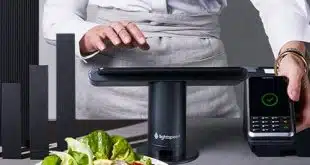JPMorgan Chase & Co. on Tuesday introduced what appears to be the first commercially available mobile remote deposit capture service for corporate entities. Widely known in electronic-payments circles for its TV ads for its consumer-based mobile check-capture product, Chase is now seeking new clients for its Image Deposit Direct Mobile service after piloting it with six companies since December.
The new service, which works with Apple Inc.’s iPhone (an Android version is coming in a few months), allows salespeople, truck drivers, field reps, or other mobile employees to deposit checks by imaging them with the smart phone’s camera and transmitting the images to the bank. Joe Hussey, executive director at J.P. Morgan Treasury Services, says IDD Mobile is also well-suited for small businesses, such as landscapers, that accept a low volume of checks at remote locations. “There’s others where business is done at a central store but occasionally they go to a trade show,” he says by way of example. “They now have a mobile option.”
As with consumer versions of this service, which have been rolled out over the past few years by a number of financial institutions, IDD Mobile depends on the Check 21 image-exchange channel to clear checks. Hussey says the current base of six clients includes media companies, distributors, and other companies with a broad network of employees in the field. One of them, for example, is Ben E. Keith Co., the country’s third-largest beer distributor. Hussey says the service will now be marketed to the approximately 20,000 businesses that use Chase’s desktop remote-capture product. Pricing will vary by volume and by the type of banking package the client has, he adds.
While consumer remote capture on smart phones has been available for a couple of years, experts say Chase appears to be the first to offer such a service for businesses. “It’s relatively big news,” notes John Leekley, founder of RemoteDepositCapture.com, an Atlanta-based information site that follows desktop and mobile check capture. “The first opportunities [for mobile capture] were in the retail sector.”
The problem IDD Mobile solves is the quick deposit of a relatively small number of checks collected at multiple locations in the course of a day or a week, says Hussey. The service offers the ability to deposit the items on the spot and avoid the possibility of losing them while in the field. “The mobility is the piece that is the biggest pain point,” he says. “[Clients] want a solution to collect on these checks without mailing or driving them in to a central location.”
While consumer checks are part of the mix, Hussey says business-to-business checks dominate because lockboxes often aren’t set up for them. These items are also ineligible for conversion to e-checks on the automated clearing house network, leaving Check 21 as the only option for electronification. “Corporate capture via mobile phone will be attractive to HVAC companies with dozens if not hundreds of trucks, electricians, food-service delivery,” says Leekley
The IDD Mobile app features a dashboard that allows company officials to monitor deposits down to the field-rep level and to keep track of all remote deposited items, whether by mobile or desktop scanner. “We think clients are looking for that more integrated solution,” Hussey says. “It really puts them in the driver’s seat for a complete view.”
While banks offering consumer mobile capture have imposed deposit limits to control risk, Hussey says Chase is not limiting IDD Mobile deposits across the board. This, he says, is largely because the bank will be working with trusted clients with which it has had long experience. “We don’t see limits being used today as broadly as they are on the consumer side,” Hussey says.
Still, Chase has clearly benefited from its consumer remote capture product. The bank created early buzz for the concept of imaging checks at home with a smart phone by running a steady stream of commercials for the service, including one featuring newlyweds snapping pictures of checks given as wedding gifts. “We learned a lot from the consumer side,” Hussey says. “We felt the market was ready for this [business version]. Corporations were looking for a solution for their low-volume, remotely dispersed or extended payments.”




